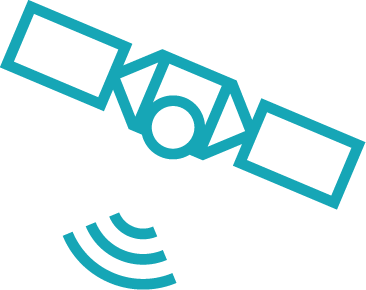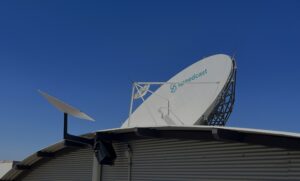How the FCC C-band Decision Will Impact the Media Business
Plotting your distribution future in uncertain times
By Michele Scotto, Senior Vice President, Speedcast
A Shot Across the Bow
On November 18, 2019, FCC Chairman Ajit Pai informed Congress that his agency planned to run a public auction for C-band spectrum. It was an outright rejection of the plan put forward by the C-band Alliance of satellite operators to sell the spectrum directly to 5G wireless carriers.
The decision was a major blow to Intelsat, SES and Telesat, which had invested considerable time and money in their proposal to the FCC and in revising it over time to sweeten the deal. In the case of Intelsat, with its heavy debt load, the news caused a 40% drop in its stock price. It was much better news for mobile carriers that may have access to C-band for 5G services sooner than expected. The definition of “sooner” remains in flux, however, because the satellite operators could mount a legal challenge to the FCC’s decision that would delay an auction for many months or even years. Much may remain unknown and uncertain for some time to come.
One thing is certain, however. The FCC’s decision was a shot across the bow for media companies distributing video content via satellite. The C-band has long been central to that distribution, and the FCC’s decision signals that the “good old days” are getting older even faster than anyone expected.
Relocating Services
The C-band Alliance plan aimed to generate a big payday from private auctions of spectrum to wireless carriers, and the alliance committed to spending part of those proceeds on helping media industry customers relocate their contribution and distribution services to higher frequencies in the C-band and beyond it to Ku-band. This will require repointing antennas at both the hub and remote sites, replacing antennas in some cases, and new transmission gear with advanced coding and modulation capabilities at both hub and remote, not to mention advanced filtering devices needed on every single C-band system in the US to block terrestrial interference. Needless to say, freeing up the proposed 300 MHz of C-band spectrum will involve a lot of work and expense, but having ample funds available would ease much of the sting for media companies.
Among the unknowns after November 18, however, is whether that pot of money will still be available. A public auction run by the FCC is almost certain to generate less money overall than the private auctions that’s one of the reasons for the FCC’s decision. From those funds, it is expected that satellite operators will be compensated for the loss of the lease on the spectrum. How much they will receive and how much will be available to their customers are open questions. Net-net, a media distribution executive could be excused for thinking the “C” in C-band stands for “confusion.”
Accelerating the Media Trend
In the early days of television, all distribution to local stations took place over the ground. AT&T Long Lines had a monopoly on the business until the rise of cable TV led HBO, Turner Broadcasting and the Christian Broadcasting Network to turn to satellite in the mid-Seventies. PBC became the first broadcaster to distribute programming by satellite in 1978. Today, most distribution of cable and broadcast TV to homes, local stations and cable headends moves over satellite, and most of that is C-band.
Starting in 2005, companies like YouTube, Apple and Amazon began streaming video and audio content across the public internet. Fast-forward to 2019, and the streaming of TV shows and movies has accelerated at an astounding clip.
Viewing hours in the US for streaming content grew 72% from Q1 2018 to Q1 2019, according to Conviva. That growth rate itself is 50% faster than in the prior year. On a global basis, the Motion Picture Association of America (MPAA) reported that subscriptions to streaming services like Netflix and Amazon Prime surpassed cable TV for the first time in 2018, reaching 613.3 million (a 27% rise from 2017), while cable subscriptions dropped 2% to 556 million.
Cable and satellite still bring in the lion’s share of subscription revenue, but cord-cutting is whittling it down year by year. In May 2019, the consultancy informitv published an analysis reporting that pay TV providers lost 3.2 million subscribers in 2018 and, by the first quarter of 2019, were losing an estimated 14,000 subscribers per day.
Resetting the Timetable
Savvy media companies have seen the writing on the wall for a while. Disney’s November announcement of its Disney+ streaming service made it crystal clear: the future of entertainment distribution is the global network-of-networks called the internet. But those same savvy media companies had reasonable expectations of a major if declining revenue stream from pay TV services for years to come, which would help fund the transformations demanded by the market.
The FCC’s action has reset the timetable. A public C-band auction faces media companies with the prospect of making significant investments in cable and satellite distribution at a time when they need to dial back investment to maximize the value of a declining revenue stream. That is driving engineering and operations decision-makers to take a step back and rethink how else programming can be delivered cost-effectively, with high quality and reliability.
A New Model
What will be required of a new distribution model should C-band satellite effectively disappear from the skies above the United States?
- It must provide a terrestrial path to cable headends, local stations and, ideally, home viewers without deploying costly new network infrastructure.
- It must deliver the same high technical quality and reliability as satellite has long offered.
- It must offer the multi-cast (one to many) economic benefits of satellite distribution, and the one-stop-shop benefits of a service managed by a single vendor.
Global IP Transport
It is a daunting list of requirements – or would be, if Speedcast had not already developed a ready-to-deploy solution.
In September 2019 Speedcast announced a major upgrade to its Global IP Transport service. Global IP Transport uses a mix of technologies – MPLS, the public internet and satellite –to deliver stable, high-quality video feeds under almost any network conditions. Making that possible are:
- An intelligent management platform that selects transmission paths based on availability and monitors and routes around internet congestion, supported by video recovery algorithms and strong encryption.
- IP multicast for multipoint distribution of common content.
- Direct Connect services with major cloud providers enabling content to move into, across and out of the cloud at minimal cost.
- Edge devices featuring full H.265 4:2:2 encoding and decoding to ensure superior video quality (SD, HD, UHD and 4K) at lower bandwidths and offering both SRT and RIST interoperability.
- An end-to-end managed service from multiple network operations centers staffed by highly-qualified technicians and engineers.
Reaching Wherever Your Content Goes
Cable MSOs serve audiences from the dense centers of cities to the most rural reaches of the county. Speedcast Global IP Transport is designed with that in mind. Programming traverses MPLS fiber networks where available and the public internet where needed. For headends and stations in broadband-poor markets, Speedcast can implement a Ku-band satellite solution managed by the same network management platform. By mixing best-of-breed technologies, Speedcast delivers cost-effective media distribution with as many nines as your content requires, without locking you into proprietary vendor solutions.
Mobile LTE for Contribution
Bonding the bandwidth of multiple cellular services, the Speedcast Media Network’s Mobile LTE offering is a fully managed service for quick uplinking of live news, sports, and events as well as for remote communications. Offered as a capex-free service that eliminates expensive hardware costs and the need for an expensive newsgathering fleet or flypack equipment, SMN Mobile LTE is a 5G-ready service is the first to support all nine leading IP mobile/wireline low-latency video protocols. It provides real-time video encoding and leverages Speedcast Media Network’s global hybrid network infrastructure to provide satellite-to-fiber, cellular-to-satellite, cellular-to-dedicated fiber, and cellular-to-IP extended connectivity. All live video feeds can be managed from the cloud for scalable and real-time video processing.
The Speedcast Advantage
Speedcast International Ltd (ASX: SDA) is the largest provider of remote communications and IT services in the world. Speedcast’s fully-managed service is delivered via a leading global, multi-access technology, multi-band and multi-orbit network of 70+ satellites and an interconnecting global terrestrial network, bolstered by extensive on-the-ground local support from 40+ countries. This global network allows customers to fully rely on the most robust, integrated infrastructure available in the market for their mission critical applications. Speedcast is uniquely positioned as a strategic business partner, tailoring communications, IT and digital solutions to meet unique customer needs and enable business transformation. Speedcast extends its managed services with network systems integration and field maintenance services. With a passionate customer focus and a strong safety culture, Speedcast serves more than 2,000 customers in over 140 countries in sectors such as Media, Maritime, Energy, Mining, Enterprise, Cruise, NGOs and Government. Learn more at www.speedcast.com.



























